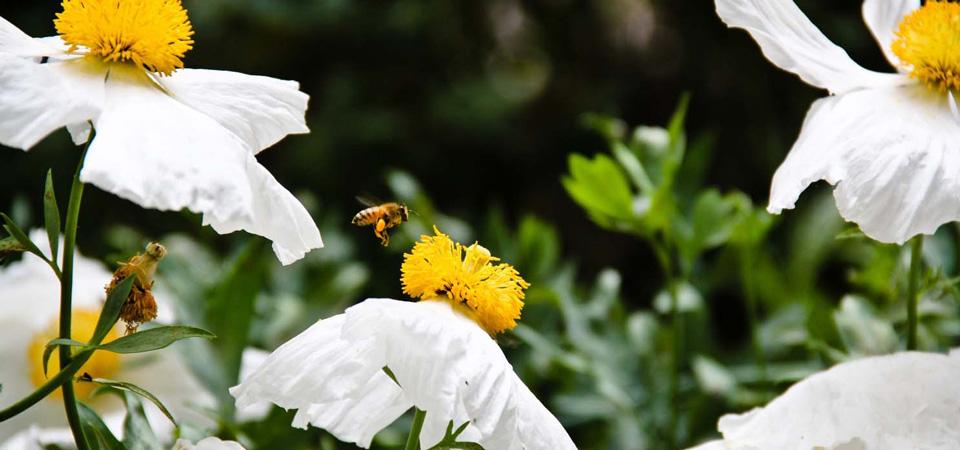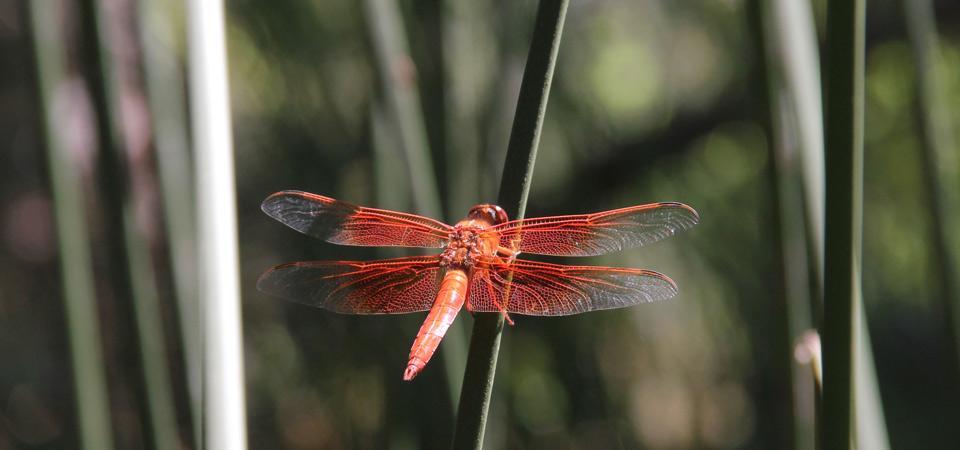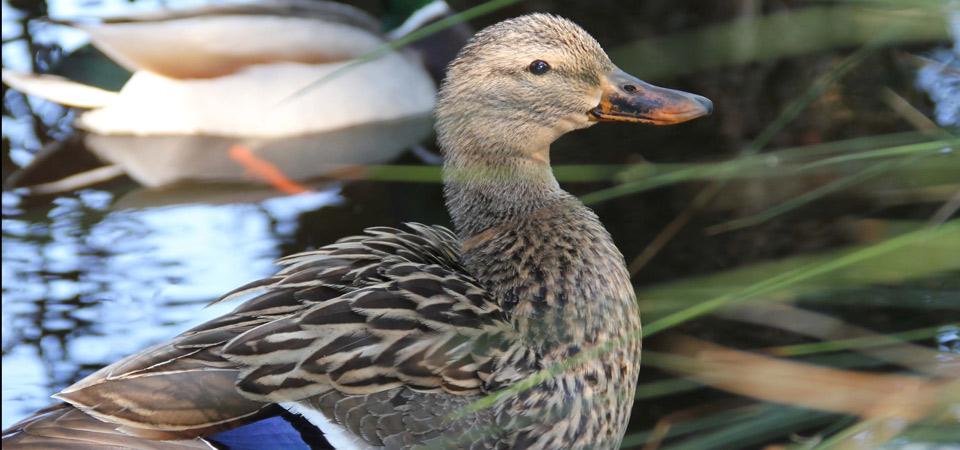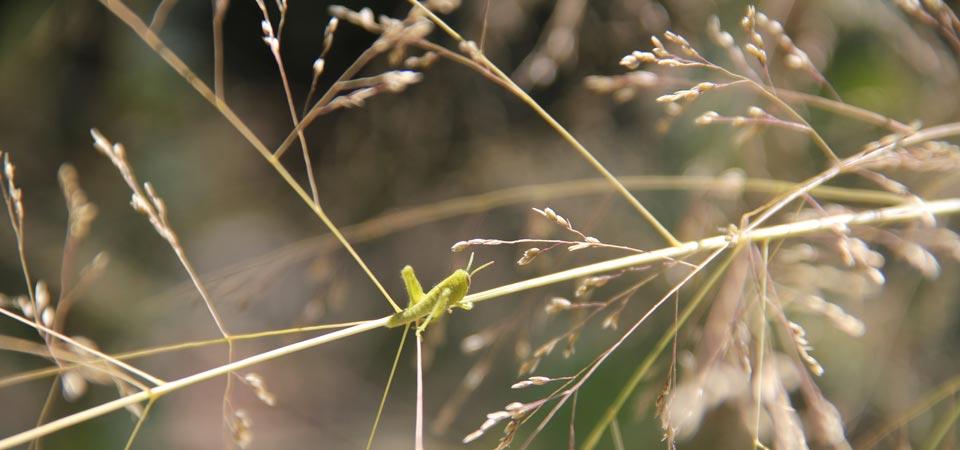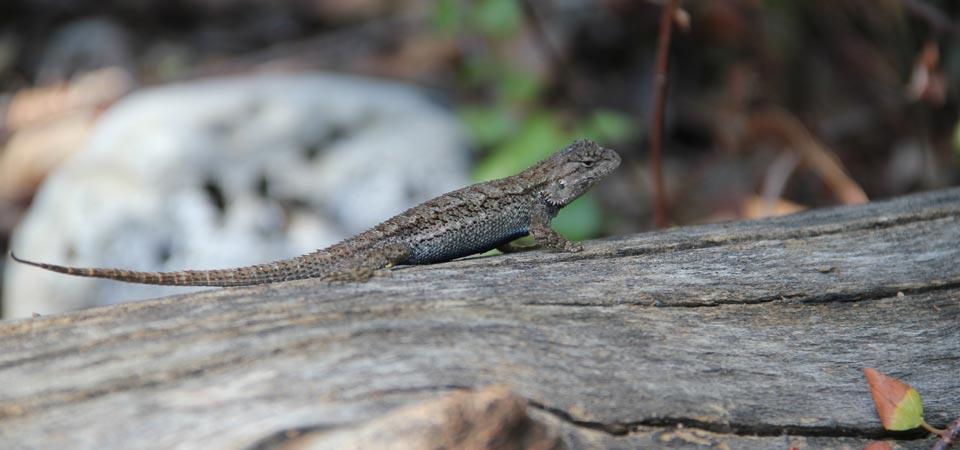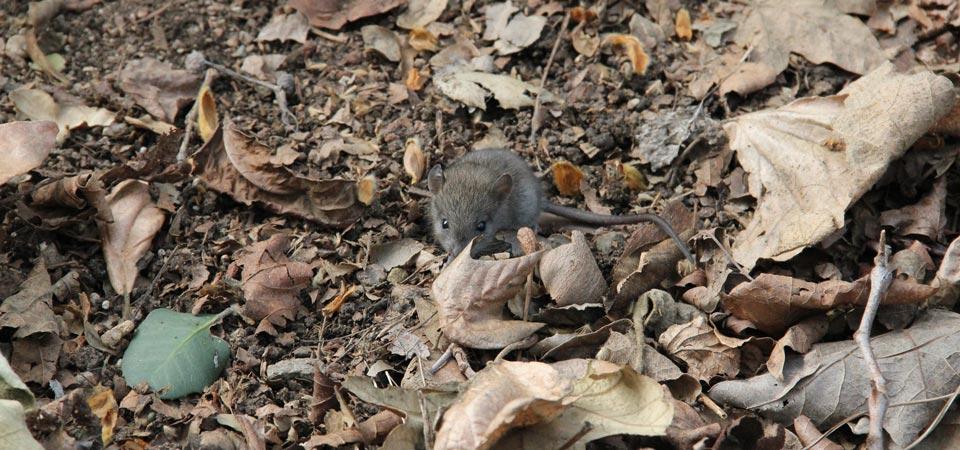Habitats That Form Our World
Coastal Sage Scrub
The native habitat of Cal Poly Pomona is coastal sage scrub, and this habitat is also well-represented at BioTrek. It is called “coastal” because it is common in coastal areas of California (in our region, it penetrates the farthest inland). It is called “sage” because it is dominated by sages (Salvia), sagebrushes (Artemisia), and other aromatic plants. Like most California habitats, coastal sage scrub has wet winters and dry summers, and is heavily affected by fire. Unlike chaparral, our other common scrub community, coastal sage scrub consists of shrubs and trees of varying height. Tépish is a native onion (Allium haematochiton) found in coastal sage scrub that has been used for food and medicine. Two species of milkweed support native Monarch butterflies. Penstemons, gooseberries, sages, Indian hemp, California buckeye, bush poppy, and others complete the palette.
Walnut and Oak Woodland
Across the street from the Ethnobotany Learning Center is a portion of our remaining walnut woodland. On the hillslope leading up to the Kellogg West Conference Center, are the remnants of a grove of southern California black walnut trees (Juglans californica). At one time, the hills on the south side of the Cal Poly Pomona campus held some of the best walnut woodlands in the region, but many of them have been destroyed by expanding development.
Like walnut woodland, oak woodland is dominated by a single tree species, in our area the coast live oak (Quercus agrifolia). Unlike the walnuts, these oaks are evergreen, and only a few herbaceous plants grow in the shade of their canopies. They are also fire-resistant; our native oak woodlands easily survived the fires of 1981 and 1989.
Wet is the Tongva name for the coast live oak (Quercus agrifolia). These great trees live for hundreds of years (there is a magnificent specimen near BioTrek that predates the campus and the city of Pomona). Their acorns provide wéwish, the porridge that was a staple of the Tongva diet.
Where there are insects, there are spiders. Both the yellow crab spider and the green garden spider blend with their surroundings, to avoid being eaten by birds, and to remain hidden from their prey.
Chaparral
Chaparral replaces coastal sage scrub on mountain slopes. In chaparral, the shrubs are of more even height, and often more tightly packed. BioTrek has representatives of all the dominant species of chaparral: chamise, redshank, manzanita, and California lilac. On hillsides of southern California you will also find the Matilija poppy, that has the largest flowers of any California native plant, as well as buckwheats, gumweeds, and California fuchsias.
Western fence lizards were breeding in the Ethnobotany Learning Center within a month of the first plantings. When they are not hiding from predators, they like to hang out on rocks, fence posts, and other sunny places. Adult males have bright blue bellies.
Meadows and Grasslands
A mixture of shade and sun, Iris douglasiana, wild strawberry, blue-eyed grass, hummingbird sage, and other plants do well in the open shade of the sycamores. Mantáka, California blue-eyed grass (Sisyrinchium bellum), is one of many native plants with medicinal uses.
Grasshoppers, relatives of the praying mantis, are some of the major herbivores feasting on the plants of the Ethnobotany Learning Center. In turn, they provide food for birds.
California’s open-wooded meadows are home to Calypte anna, our most common resident hummingbird. They buzz from flower to flower, looking for small insects and nectar. Red flowers are especially attractive to hummingbirds in this area, but they will visit any flower with nectar that they can reach with their long tongues. Both male and female hummingbirds will defend patches of flowers against other hummingbirds, and females are also very defensive of their nests. The nests are small, carefully made, and often hidden, and usually hold two eggs.
The Tongva call this bird pínar, a word that also means “messenger.”
Wetlands and Rivers
Most people think of southern California as a very dry place, and wouldn’t be surprised to hear it called a “desert”. Although there are true deserts on the inland sides of the mountain ranges, the coastal sides once supported massive wetlands and even lakes, fed by a high water table and the seasonal and permanent rivers and streams. Once, great marshes covered large parts of the region, some with permanent lakes, and the rivers and streams were filled with water, both above and below their sands. In these lands were vast forests of willow and cottonwood, and marshes of tule and cattail. A very small part of these still exists, but it is one of the most threatened habitats in California.
Most of that water is still here, but it now serves the needs of millions of people, “manufactured landscapes”, and the remnants of agriculture. Once, the Los Angeles, San Gabriel, and Santa Ana rivers flowed freely to the ocean, but now the largest single freshwater outfall is the Hyperion Sewage Treatment Plant.
Our pond represents a small part of those aquatic environments. Its plants and animals are still found in the remnant wetlands. We can look across its still surface and remember California as it was.
The permanent streams of southern California arise high in the mountains, fed mainly by snowmelt. They trickle and rush through meadows and gorges, through thickets of willow and alder, to the lowlands.
Islands and Coast
The meeting of the ocean and the land creates a unique environment, both in the ocean and on the land. This habitat provides a home for plants of the sea bluffs, coastal plains, and offshore islands.
The plants of the California islands were important to the indigenous culture. Súul (deergrass), used for baskets, and mánit (jimson weed) were believed to give access to the spirit world.
The indigenous people travelled from the mainland to island villages in Pimu (Catalina Island), Kinkipar (San Clemente Island), and the other southern Channel Islands. These islands, and some areas of the mainland coast, have a unique flora with species found nowhere else. The Channel Islands have been heavily impacted by grazing of cattle, sheep, and goats, but with the removal of these animals, they are slowly recovering.
Forests
The land of snows and the home of waters, California's mountains shape the rest of the environment. From the fog-enshrouded redwood canopies of the north coast to the junipers of the desert's edge, the mountains hold species never found in the lowlands.
In the mountain canyons are bigleaf maple and canyon live oak, and on the slopes are forests of Jeffrey pine, incense cedar, and black oak. North along the coast are the redwoods; indigenous people traded for redwood planks that they used to build sea-going canoes. California forests are often a mix of conifers, broad-leafed evergreen trees, and deciduous trees. California wild grape reminds us that the state’s famous wineries draw upon ancient traditions of America as well as Europe. Although they are much less diverse than the forests of the tropics, they are among the most diverse habitats in California.
When bees are mentioned, many of us think first of the European honeybee and its Africanized relatives, but California is home to a diversity of native bees. Our carpenter bees come to collect pollen and nectar from our native plants. Carpenter bees nest in holes they chew in wood (they occasionally cause minor damage to houses). They are not social bees; a mother carpenter bee only cares for her own young.
Deserts
In this region, deserts are “on the other side of the mountains”, in their rain shadow. The high mountain ranges of southern California block the storms from the Pacific, creating the deserts. Further south in Baja California, they reach the coast, part of the large band of “latitudinal deserts” at 30° N and 30° S of the equator. California contains parts of three deserts, the Great Basin of the north, the Mojave Desert, and the western Sonoran Desert, often called the Colorado Desert after the river that marks its eastern side. California deserts sometimes get summer rain from the east (the same mountains that keep the Pacific storms from the desert hold these summer storms away from the coast).
Desert plants and animals are adapted to the dry habitats that result from inconsistent seasonal rainfall. After a wet winter, the deserts will be carpeted by annual wildflowers, some of which may have lived as seeds in the dry soil for decades. The perennial plants conserve water, or send their roots to great depths to find it, or simply shut down during the dry season. Our garden includes plants from across the deserts of California, along with a few from neighboring Arizona and Baja California.
The Praying Mantis is a grasshopper relative named for the way its forelegs are held as if in prayer, but it might also be called “preying” mantis, because they capture and eat other insects. Praying mantises are also known for their unusual mating habits: the female often kills the male during or after mating.
Toward the Tropics
If you were to set out from Pomona, California to walk to the tropics, the fastest route would take you through Baja California, where, south of La Paz, you would reach a large concrete marker at the Tropic of Cancer. (Further south, you’d reach the end of the peninsula, and have to take a boat to go further.)
In Baja California, and adjacent mainland Mexico, the deserts expand to reach the ocean, and then further south they are replaced by tropical thorn scrub. The Ethnobotany Learning Center includes an area near the rainforest greenhouse that is planted with species from the deserts and tropical thorn scrub of western México. Many of our California desert plants have their evolutionary origins in these dry tropical forests. As well as being important to the indigenous people of those regions, these species form a connection to the tropics.
